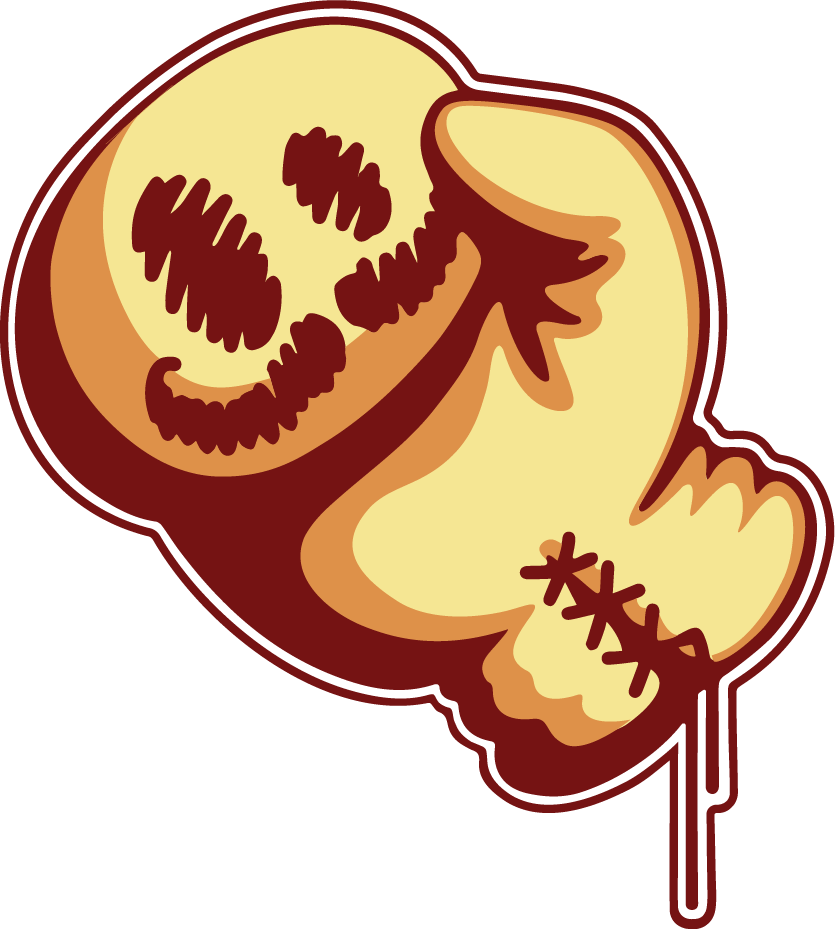Hello residents of Scoville! It’s just a fact that no creative endeavor exists in a vacuum. Inspiration and design solutions can come from a lot of different places, but the point is, it comes from somewhere. Game design is no different. The seed of an idea that becomes a new game can come from conversations with friends, your favorite movie of show, or even from playing other board games. While it’s true that the first ideas for Doomsday Peppers came from jokes and conversations as much as from anywhere else, possibilities and solutions to creative questions came from other games as well. That’s where I want to focus today… As much as I’d love to recount the weird conversations that led my brothers and I here, they were way too long ago to remember in detail (and frankly, they’re probably of the “you had to be there” variety anyway). Instead, let’s look at a few of the games we love, and how they’ve influenced Doomsday Peppers.
I have to first mention the B-Movie games collection, published by Z-Man games. I have to. Especially “Grave Robbers from Outer Space” & “Kung Fu Samurai on Giant Robot Island” Playing these games over and over with my brothers led directly to our wanting to get into game design at all, so a big thank you to Z-Man games and the games’ designer, Stephen Tassie. These games may be out of print, but they’ll never be out of our rotation! Although DdP’s current incarnation doesn’t much resemble these little gems, its early versions owed a lot to them. Early on, DdP was a “gotcha”-style competitive game, where players tried to become the best prepper, using weapons and fellow survivors to eliminate each other. We’ve changed it up, quite a bit since then. For instance, one thing we decided was to make our game less reliant on “luck of the draw” than the B-Movie games are. We were adamant that more deliberate, strategic play would be a key part of DdP. One piece of Tassie’s series that’s stayed, however, is a healthy dose of satire and tongue-in-cheek humor. That’s something the B-Movie Games have in spades.
As Doomsday Peppers moved away from being a winner-take-all competitive game, I started looking more at “one-vs-many” style mechanisms. Specifically, “the traitor”. I’m a big fan of hidden traitor games, so I naturally leaned into that and came up with a version of Ddp that was just that. I looked and played a lot of hidden traitor games, learning what I could from them, but the one I kept going back to was Plaid Hat Games’ “Dead of Winter.
Distilling that game down to its essentials, I focused on the use of roles and how it used the idea of the traitor, sabotaging the group’s efforts. Since we already had survivor characters in Doomsday Peppers at that time, I worked on bulking up their role. Unfortunately, this line of thought didn’t last long. It quickly became clear that to make these elements work. I’d basically be retooling our game into a reskinning of DoW, which is the last thing I wanted. Not only that, but having different goals for each player would needlessly complicate the game, and at this point, I wanted to simplify things. For that same purpose, I’ve since dropped the Survivors completely. I still like the idea of having these characters in the game’s world somehow, though. Maybe they’ll show up in an expansion? So, in the end, Jon Gilmour and Isaac Vega’s “Dead of Winter” became more of a spiritual inspiration. One thing we did keep pressing forward with was the idea of “the traitor.”
Having a traitor was a natural fit, with our Pepper-worshipping cult built into the world we’d created. So, I decided to have an openly known traitor. We also already had a game structured into two halves, or “phases”, so making the traitors’ reveal the turning point of the game just made sense. We also had multiple endgame paths the game could go, in the form of the Harvests. So, with all these elements, a great source of research and inspiration was, of course, “Betrayal at the House on the Hill,” from Avalon Games. Seeing how Bruce Glassco, the game’s designer, used elements similar to ones we were already working with was a great jumping off point for figuring out how our own pieces could fit together. Luckily, Betrayal proved ridiculously fun to play, so I had no problem playing it over and over (for research purposes, of course). The one thing we want to see from Doomsday Peppers that isn’t always in a game of Betrayal is a balanced game experience. I think it works for Betrayal that the traitor feels a little outgunned. The game’s theme and storyline(s) support that feeling. For Doomsday Peppers, however, I want to make sure the Cultist traitor and the Neighbors both feel like they’re on equal footing, and both have a shot at winning.
So many designers out there are making so many outstanding games, it’s hard not to be inspired to make one of my own. These are just a few that come to mind as inspiration for Doomsday Peppers. What games do you play that spark your creativity in some way?

